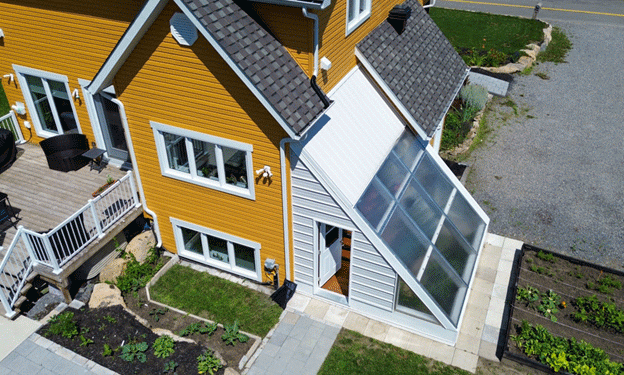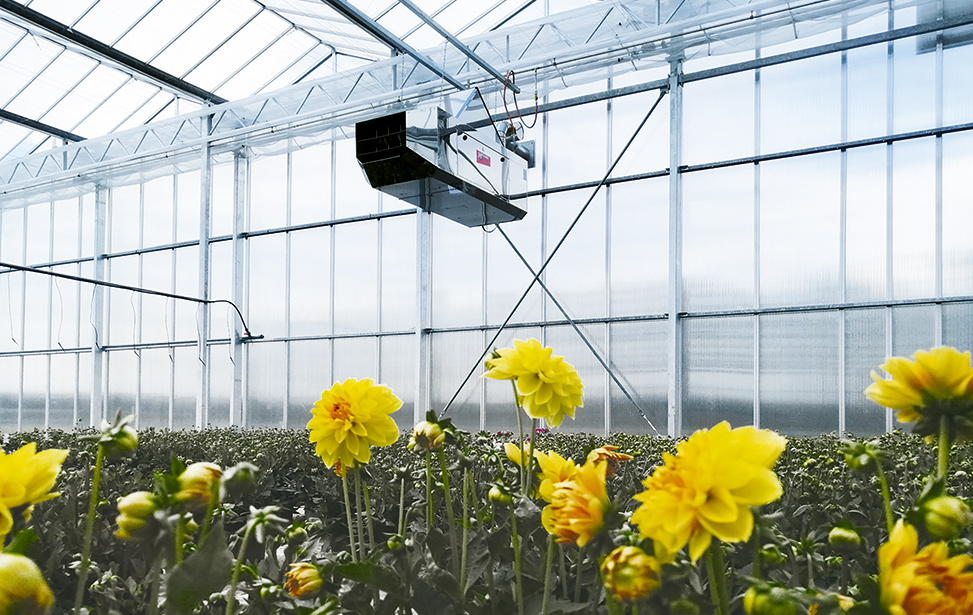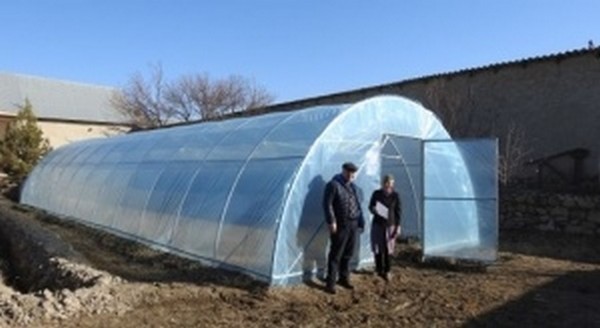Growing fruits and vegetables during Québec’s long, cold winters is no easy feat. However, for Maud Lambert, a passionate advocate of sustainable living, it has become a reality thanks to her newly built bioclimatic greenhouse. Attached directly to her home in Saint-Jérôme, Québec, this eco-friendly structure allows her to grow produce throughout the year, dramatically reducing her reliance on grocery stores while embracing a lifestyle centered on self-sufficiency and sustainability.
The concept of a bioclimatic greenhouse is based on harnessing natural elements to regulate temperature. Instead of relying on energy-intensive heating methods, these greenhouses are designed with sustainable architecture and natural materials. For instance, the greenhouse’s roof is angled to maximize solar energy capture during winter while minimizing it during summer, ensuring optimal temperature control throughout the year.
The proximity of the greenhouse to the house itself offers another key advantage: it helps insulate the home’s north-facing wall, where heat loss is typically highest. Additionally, heat from the home can be used to help warm the greenhouse during colder months. Other bioclimatic features, such as air-recycling fans, heat-retaining stones, and moisture-resistant charred wood, further enhance the energy efficiency of the greenhouse.
Maud Lambert, whose goal is to become 60% self-sufficient in her food production, sees this greenhouse as an extension of her home and lifestyle. With a wide variety of plants, including lettuce, herbs, scallions, root vegetables, and even exotic fruits like bananas and pineapples, she can grow and harvest food year-round. By avoiding store-bought produce, especially during the winter months, she significantly reduces her household’s carbon footprint, helping to eliminate the greenhouse gas emissions associated with importing out-of-season fruits and vegetables.
Energy Efficiency:
The energy savings associated with Maud’s bioclimatic greenhouse are substantial. While commercial greenhouses can require massive amounts of energy to maintain suitable growing conditions, the design and features of a bioclimatic greenhouse drastically reduce the need for heating. Samuel Leclerc, the eco-entrepreneur behind the construction of Maud’s greenhouse, emphasizes that even during the coldest nights, heating needs are minimal compared to those of large-scale commercial greenhouses.
This system not only stretches the growing season but also supports a more sustainable food production system. The greenhouse allows Maud to start planting earlier in the season and extend her harvest well into the fall, enabling her to stock her cold storage with root vegetables and potatoes for the winter months. By growing much of her own food, she reduces packaging waste and transportation emissions associated with traditional grocery shopping.
The Broader Impact:
Beyond the practicality and sustainability benefits, Maud’s bioclimatic greenhouse also provides an inspiring example of how individuals can take control of their food production, even in regions with harsh climates. The greenhouse has become an integral part of her home, serving as an additional pantry just steps from her kitchen.
This project began as a passion, sparked by an urban agriculture course she taught at the local high school. After successfully growing small crops in a classroom greenhouse, Maud realized that indoor growing could be scaled to her home. Despite some challenges during the first winter, she remains committed to experimenting and refining her greenhouse practices to achieve greater self-sufficiency.
Her journey reflects the growing interest in sustainable agriculture and local food production across Québec and beyond. As energy costs rise and the environmental impact of long-distance food transportation becomes more evident, bioclimatic greenhouses offer a viable solution for those seeking to grow their food in an eco-friendly manner.
Maud Lambert’s bioclimatic greenhouse demonstrates the potential for sustainable, year-round food production in even the coldest climates. By leveraging natural elements to maintain ideal growing conditions, she has reduced her reliance on commercial food systems and minimized her environmental footprint. Her experience serves as a model for others interested in self-sufficient living and sustainable agriculture, proving that with the right design and a passion for eco-friendly practices, it’s possible to grow fresh, healthy food all year long.









